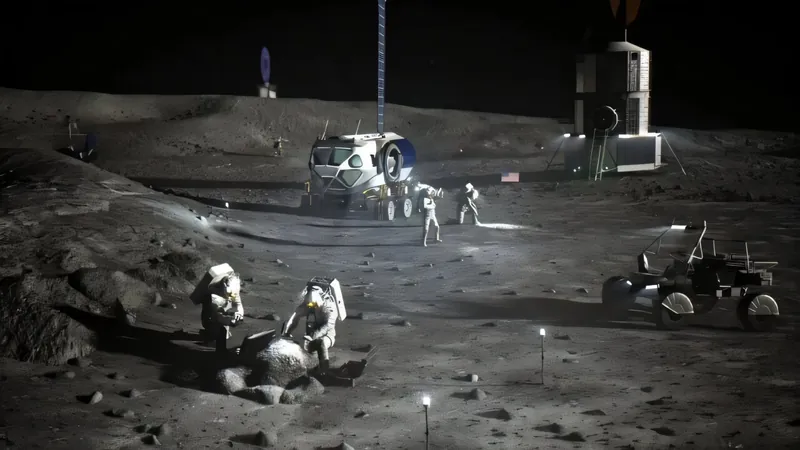
Revolutionizing Lunar Habitats: The Power of Thermoelectric Generators
2025-08-25
Author: Liam
Unlocking the Moon's Energy Potential
Imagine a future where lunar habitats thrive on power generated directly from the moon’s extreme temperature fluctuations! A recent study published in Acta Astronautica dives into how thermoelectric generators (TEGs) could be the key to sustaining human life on the lunar surface. Conducted by a team of researchers from the Republic of Korea, this groundbreaking research aims to enhance power efficiency and reliability amid the harsh lunar conditions.
Harnessing Extreme Temperatures
The study marks the first analysis of a sophisticated TEG system designed specifically for the moon. It focuses on the drastic temperature swings between lunar day and night, which can soar up to 121°C (250°F) and plunge down to -133°C (-208°F). Prior research hinted that these temperature extremes might actually improve TEG efficiency, known as transient-state operation.
A Game-Changer for Lunar Habitats
By examining various heat storage (HS) systems, particularly multiple-HS systems, the researchers discovered a staggering 48.9% increase in power generation potential under lunar conditions. This suggests a bright future for TEGs in supporting long-term lunar habitats and the ambitious plans for human exploration beyond Earth.
The Quest for Sustainable Power
According to the study, deep space exploration—especially establishing human bases on the moon and Mars—is gaining worldwide momentum. Scientists involved in projects like NASA’s Artemis program emphasize the necessity of a manned lunar base, viewing it as a stepping stone for future solar system missions. Ensuring an adequate power supply for these bases is a primary concern, and this research addresses that need.
Rethinking Power Sources
While the study mentions alternatives like Radioisotope Thermoelectric Generators (RTGs), it cautions against their use for long-term missions due to the decay of radioactive isotopes. Despite their successful deployment on past lunar and Martian missions, TEGs present a more reliable solution for ongoing lunar habitation.
Looking Ahead: Lunar and Mars Exploration
NASA plans to incorporate RTGs in upcoming missions like Dragonfly, slated for launch in July 2028. The exploration of solar and nuclear power on the moon further amplifies the avenues for sustainable energy production. Ultimately, the Artemis program's goal of establishing a long-term human presence on the lunar surface underscores the importance of this innovative research.
The Future of In Situ Resource Utilization (ISRU)
By utilizing TEGs on the moon, we can significantly reduce the burden of transporting power sources from Earth. This practice aligns seamlessly with in situ resource utilization (ISRU), harnessing local resources to sustain missions. TEGs, with their ability to capitalize on the moon’s wide temperature range, could dramatically shift how we power future lunar endeavors.
A Step Towards Humanity's Cosmic Future
As we stand on the brink of interplanetary settlements, studies like this reveal a growing commitment to developing Earth-based technologies for extraterrestrial life. The potential of TEGs as a primary power source for lunar habitats signifies just the beginning of humanity’s ambitious journey towards the stars!









 Brasil (PT)
Brasil (PT)
 Canada (EN)
Canada (EN)
 Chile (ES)
Chile (ES)
 Česko (CS)
Česko (CS)
 대한민국 (KO)
대한민국 (KO)
 España (ES)
España (ES)
 France (FR)
France (FR)
 Hong Kong (EN)
Hong Kong (EN)
 Italia (IT)
Italia (IT)
 日本 (JA)
日本 (JA)
 Magyarország (HU)
Magyarország (HU)
 Norge (NO)
Norge (NO)
 Polska (PL)
Polska (PL)
 Schweiz (DE)
Schweiz (DE)
 Singapore (EN)
Singapore (EN)
 Sverige (SV)
Sverige (SV)
 Suomi (FI)
Suomi (FI)
 Türkiye (TR)
Türkiye (TR)
 الإمارات العربية المتحدة (AR)
الإمارات العربية المتحدة (AR)